Are you passionate about fashion and looking to break into the industry? The fashion industry can be competitive, but with the right tips and strategies, you can pave your way to a successful career. In this article, we will provide practical advice on how to get into fashion, including understanding the different sectors and roles, developing the necessary skills, building a portfolio, networking, and finding job opportunities.
Key Takeaways:
- Understand the various sectors and roles within the fashion industry.
- Develop the necessary creative, business, and communication skills.
- Build a strong portfolio showcasing your best work.
- Network with industry professionals and attend fashion events.
- Explore job opportunities through internships, freelancing, and networking.
Understanding the Fashion Industry
The fashion industry is a diverse and dynamic field that caters to a wide range of customers and styles. To navigate this industry successfully, it is important to understand its different sectors and the roles within them.
Fashion Industry Sectors
The fashion industry encompasses several sectors, each with its own unique characteristics and target audience:
- High-End Fashion: This sector focuses on luxury and exclusive designs, catering to affluent customers who value craftsmanship and exclusivity.
- Ready-to-Wear: Also known as “prêt-à-porter,” this sector offers mass-produced clothing that is readily available for purchase. Ready-to-wear fashion combines style and affordability for the everyday consumer.
- Mass Market Fashion: This sector caters to a broad consumer base, offering affordable and trendy clothing that is accessible to the masses. It focuses on producing garments in large quantities to meet high demand.
- Streetwear: Streetwear is a fashion sector that blends elements of fashion, music, and art. It is known for its casual and urban-inspired style, often influenced by youth culture and street fashion trends.
Fashion Industry Roles
Within the fashion industry, numerous roles contribute to the creation, production, marketing, and distribution of clothing and accessories:
| Role | Description |
|---|---|
| Fashion Designers | Create original and innovative designs for clothing, accessories, or footwear. |
| Merchandisers | Plan and manage product lines for retailers, ensuring they align with market trends and customer preferences. |
| Stylists | Curate and create visually appealing fashion looks for individuals, magazines, or events. |
| Buyers | Select and purchase fashion products from wholesalers or manufacturers for retail stores. |
| Public Relations Professionals | Manage communication and promotion of fashion brands, events, and campaigns. |
These are just a few examples of the many roles available in the fashion industry. Each role contributes to the overall success and growth of fashion brands, labels, and organizations.
By understanding the different sectors and roles within the fashion industry, you can gain insights into the diverse opportunities available and make more informed decisions about the path you want to pursue.
Developing the Necessary Skills
To succeed in the fashion industry, you need to possess a diverse set of skills that are essential for navigating this competitive field. Developing these skills will not only enhance your chances of success but also make you stand out among your peers.
1. Creative Skills in Fashion
Creativity is at the core of the fashion industry. As a fashion professional, you need to have a keen sense of aesthetics and the ability to think outside the box. Developing your creative skills will enable you to come up with innovative and unique designs that captivate audiences.
2. Business Skills in Fashion
Understanding the business side of the fashion industry is crucial for long-term success. Building your business skills will give you a holistic perspective of the industry, including marketing, branding, and financial management. These skills will help you comprehend the market dynamics, identify opportunities, and make informed decisions that drive your fashion career forward.
3. Communication Skills in Fashion
Effective communication is vital for collaboration, presenting ideas, and building relationships in the fashion industry. Developing your communication skills will enable you to articulate your vision, work seamlessly with team members, and establish rapport with clients and stakeholders. Strong communication skills can pave the way for valuable networking opportunities and open doors to new career prospects.
“Creativity is allowing yourself to make mistakes. Art is knowing which ones to keep.” – Scott Adams
| Skills | Importance | How to Develop |
|---|---|---|
| Creative Skills | Essential for innovative designs |
|
| Business Skills | Understand the industry from a business perspective |
|
| Communication Skills | Crucial for collaboration and building relationships |
|
Building a Portfolio
A strong portfolio is essential for showcasing your skills and style in the fashion industry. It serves as a visual representation of your talent and creativity, allowing potential employers or clients to get a glimpse of your capabilities. Here are some fashion portfolio tips to help you create an impressive portfolio that effectively showcases your skills and sets you apart from the competition.
1. Select your best work
Choose a selection of your best fashion-related projects to include in your portfolio. This can range from sketches, garment designs, fashion illustrations, photographs, or even mood boards. Aim for a diverse range of pieces that demonstrate your versatility and proficiency in different areas of fashion.
2. Organize your portfolio logically and aesthetically
An organized and visually appealing portfolio can make a lasting impression. Arrange your work in a logical order, allowing viewers to navigate your portfolio easily. Consider categorizing your pieces by theme, medium, or chronology. Use a consistent layout and design elements to create a cohesive and professional look.
3. Provide clear descriptions and captions
For each piece in your portfolio, provide clear and concise descriptions or captions that explain the concept, inspiration, and techniques used. This helps viewers understand your creative process and the story behind each work. Additionally, including details such as dimensions, materials, and any notable achievements or recognition can further enhance the presentation of your work.
4. Highlight your unique strengths
Identify your unique strengths and showcase them prominently in your portfolio. Whether it’s a particular design aesthetic, technique, or area of expertise, emphasize what sets you apart from other fashion professionals. Use your portfolio as a platform to demonstrate your individuality and unique vision in the fashion industry.
5. Keep your portfolio updated
As you continue to create new work and gain more experience, regularly update your portfolio to reflect your growth and progress. Remove any outdated or weaker pieces and replace them with your latest work. Keeping your portfolio up to date demonstrates your commitment to staying relevant in the ever-changing fashion industry.
6. Seek feedback from mentors or industry professionals
Getting feedback from mentors or industry professionals can provide valuable insights and help you improve the quality of your portfolio. Reach out to trusted individuals who have experience in the fashion industry and ask for their honest opinions. Constructive criticism can guide you in refining your portfolio and developing your skills further.
By following these fashion portfolio tips, you can create a compelling portfolio that effectively showcases your skills, style, and unique strengths. Remember to make it visually appealing, well-organized, and up to date to capture the attention of potential employers or clients in the competitive fashion industry.
Networking in the Fashion Industry
Networking is a vital component of success in the fashion industry. By connecting with professionals, attending events, and utilizing social media platforms, you can expand your network, gain knowledge, and open doors to new opportunities. Follow these strategies to enhance your fashion industry networking:
1. Attend Fashion Events
Make it a priority to attend fashion shows, industry conferences, and trade fairs. These events provide valuable opportunities to meet designers, stylists, buyers, and other professionals. By immersing yourself in the fashion community, you can gather insights, make connections, and stay updated on industry trends.
2. Join Professional Organizations
Become a member of professional fashion organizations or associations. These groups offer events, workshops, and networking sessions exclusively for members. By participating actively, you can engage with industry leaders, gain exposure, and establish valuable relationships with like-minded professionals.
3. Utilize Social Media Platforms
Harness the power of social media to expand your fashion industry network. Create a professional presence on platforms like LinkedIn, where you can connect with industry leaders, showcase your work, and engage in conversations. Share your knowledge, insights, and projects to establish yourself as a credible presence within the fashion community.
4. Be Proactive and Genuine
When networking, be proactive in initiating conversations and building relationships. Approach industry professionals with respect and an eagerness to learn. Show genuine interest in their work, ask thoughtful questions, and offer support where you can. Authenticity and a positive attitude can leave a lasting impression and foster meaningful connections.
Networking can be a powerful tool in the fashion industry. It not only allows you to connect with professionals but also provides a platform to learn, collaborate, and discover new opportunities. Take the initiative, set networking goals, and watch your network grow.
Finding Job Opportunities
In the competitive fashion industry, finding job opportunities requires strategic approaches and the utilization of various methods. By implementing effective fashion job search strategies, exploring fashion internships, and considering freelancing in fashion, you can increase your chances of landing your dream job.
Networking and Leveraging Connections
In the fashion industry, networking plays a crucial role in discovering both advertised and hidden job openings. Leverage your professional and personal connections to explore potential opportunities. Attend industry events, join fashion-specific communities or groups, and connect with professionals through social media platforms like LinkedIn. By building genuine relationships and expanding your network, you can gain valuable insights and access to job opportunities that may not be publicly advertised.
Researching Companies and Job Postings
Researching fashion companies and browsing their websites can be an effective way to find job openings. Many companies regularly post their vacancies on their websites or job portals. Visit their careers page, explore their job listings, and submit your application directly. Additionally, industry-specific job boards or fashion job search websites can also provide a centralized platform to discover relevant opportunities.
Exploring Fashion Internships
Consider fashion internships as invaluable stepping stones to gain experience and industry knowledge. Internships offer hands-on training, exposure to different aspects of the industry, and the opportunity to build a strong network. Look for internships at fashion companies, design studios, fashion magazines, or retailers. Even unpaid or low-paid internships can provide valuable work experience and enhance your resume.
Freelancing in Fashion
Freelancing in the fashion industry can provide exposure, build your portfolio, and create opportunities for collaboration with established brands or designers. Consider offering your services as a freelance fashion designer, stylist, photographer, or writer. Showcase your skills and unique perspective through a professional website or social media platforms. Freelancing can not only provide a source of income but also open doors to future job opportunities.
Combining Strategies for Success
When searching for job opportunities in the fashion industry, it is important to combine different strategies to increase your chances of success. Networking, researching companies, exploring internships, and freelancing can all work together to create a well-rounded approach. By leveraging your connections, actively searching and applying for jobs, gaining practical experience through internships, and showcasing your talent through freelancing, you can position yourself as a strong candidate and increase your chances of finding exciting job opportunities in the fashion industry.
| Fashion Job Search Strategies | Pros | Cons |
|---|---|---|
| Networking | • Access to hidden job openings• Valuable industry insights• Opportunities for referrals and recommendations | • Requires time and effort to build relationships• Not all connections may lead to job opportunities |
| Researching Companies | • Direct access to job postings on company websites• Tailor applications to specific companies• Understand company culture and values | • Limited to positions advertised by companies• Compete with a larger pool of applicants |
| Fashion Internships | • Gain practical experience and industry knowledge• Build a strong network of professionals• Enhance your resume and portfolio | • Often unpaid or low-paid• Limited duration of the internship• May require relocation or flexibility |
| Freelancing in Fashion | • Showcase your skills to a wider audience• Gain exposure and build your portfolio• Create networking opportunities | • May require building a client base from scratch• Inconsistent income• Balancing multiple projects and clients |
Interviewing and Navigating the Fashion Industry
Entering the fashion industry can be an exhilarating journey filled with opportunities and challenges. To make your transition smoother, it’s crucial to be well-prepared and equipped with the right knowledge. From research and portfolio showcasing to industry etiquette and adaptability, here are some tips to help you ace interviews and navigate the fast-paced fashion industry.
Research Companies and Understand Their Products
Before heading into interviews, take the time to thoroughly research the companies you’re interested in. Familiarize yourself with their brand, design aesthetics, target audience, and product offerings. Being knowledgeable about the company demonstrates your genuine interest and commitment to the fashion industry.
Practice Common Interview Questions
Prepare for interviews by practicing common fashion industry-related questions. These may include inquiries about your design process, understanding of fashion trends, ability to work under pressure, and experience collaborating with cross-functional teams. By rehearsing these questions, you’ll be ready to showcase your skills, passion, and creativity confidently.
Showcase Professionalism and Industry Etiquette
In the fashion industry, professionalism and industry etiquette are highly valued. Dress appropriately for interviews, paying attention to attire that aligns with the company’s brand and culture. Remember to bring a well-organized portfolio that highlights your best work. Professionalism goes beyond appearances—display good manners, active listening skills, and a positive attitude throughout the interview process.
Navigate the Fast-Paced Fashion Industry with Adaptability
The fashion industry moves at a rapid pace, continuously evolving and adapting to new trends and consumer demands. To succeed, cultivate adaptability and a willingness to learn. Embrace challenges as opportunities for growth, take each task as it comes, and seek guidance when needed. Demonstrate initiative, be proactive, and show your ability to thrive in a dynamic and ever-changing industry.
Remember, the journey in the fashion industry may have twists and turns, but with the right preparation, mindset, and determination, you can navigate it with confidence. Stay focused on your goals, continuously learn and develop your skills, and seize the opportunities that come your way. Embrace the fast-paced nature of the fashion industry and let your passion for fashion shine.
Identifying the Right Fashion Career Path
Before embarking on your journey towards a fashion career, it’s crucial to take the time to identify the specific role and career path that aligns with your interests and goals. With the diverse range of opportunities within the fashion industry, it’s essential to explore different options and determine which path best suits your passions and aspirations.
“The key to success in the fashion industry is to find your niche, the area where you feel most inspired and fulfilled.”
Consider the following factors when choosing your fashion career:
- Personal Interests: Reflect on what aspects of fashion captivate you the most. Are you drawn to fashion design, where you can bring your creative vision to life? Or do you have a passion for styling, using clothing and accessories to create captivating looks? Identifying your personal interests will help you narrow down the abundant career options available.
- Industry Roles: Take the time to research and understand the various roles within the fashion industry. From fashion design and merchandising to marketing and PR, each role brings its unique set of responsibilities and opportunities. Explore the day-to-day tasks, required skills, and potential career progression for different roles to gain insight into the path that resonates with you.
- Company Type: Consider the types of fashion companies that align with your career goals. Luxury brands offer a world of glamour and exclusivity, while mainstream brands cater to a broader audience with trendy and accessible fashion. Online retailers provide opportunities for tech-savvy individuals, and magazines offer avenues for creative expression and storytelling. Understanding the various company types will help you envision where you see yourself thriving.

By carefully considering your personal interests, exploring different fashion roles, and understanding the diverse array of fashion companies, you can make informed decisions about your fashion career. Remember, the path you choose should be one that ignites your passion and sets you on a fulfilling journey in the ever-evolving world of fashion.
| Role | Responsibilities | Skills Required |
|---|---|---|
| Fashion Designer | Create innovative designs, oversee production, collaborate with teams | Creativity, sketching, sewing, fashion trends |
| Stylist | Curate looks for individuals or events, create cohesive outfits | Fashion knowledge, attention to detail, styling techniques |
| Marketing Specialist | Promote brand, develop marketing strategies, analyze consumer trends | Marketing knowledge, creativity, analytical skills |
| Merchandiser | Plan product assortment, analyze sales data, collaborate with buyers | Business acumen, data analysis, trend forecasting |
Educating Yourself about the Fashion Industry
While formal fashion education is not mandatory, gaining knowledge about the industry is essential to succeed. To start, identify the skills required for your chosen fashion career path and explore educational opportunities that align with your goals. Consider taking courses, workshops, or online programs that focus on fashion industry education. These resources can provide you with valuable insights, techniques, and practical knowledge that will complement your creativity and passion for fashion.
Expanding your understanding of the fashion industry goes beyond formal education. One effective way to gain knowledge is by reading books and articles related to fashion. This will keep you informed about industry trends, historical context, and the work of influential fashion icons. Additionally, watching videos, documentaries, and interviews about fashion can provide you with visual inspiration and a deeper appreciation for the artistry and craftsmanship behind each design.
Immersing yourself in the fashion world is crucial for continuous learning. Follow renowned fashion bloggers, influencers, and industry professionals on social media platforms to stay updated with the latest trends, runway shows, and industry news. Engage with their content, ask questions, and participate in fashion discussions to expand your knowledge and connect with like-minded individuals.
Continuous Learning for Success
Continuous learning is key to staying relevant and advancing in the fashion industry. It demonstrates your commitment to personal growth and professional development. Keep exploring new areas within the fashion industry that interest you, such as sustainable fashion, ethical practices, or innovative technologies. Attend industry conferences, workshops, and seminars to gain insights from industry experts and expand your network.
Continuous learning not only enhances your knowledge but also makes you more appealing to potential employers in the fashion industry.
By embracing continuous learning, you can adapt to the ever-evolving nature of the fashion industry. Improve your skills, explore new techniques, and explore emerging trends to stay ahead of the curve. Remember to document your learning journey, whether through a journal or an online portfolio, to showcase your dedication and growth to potential employers or clients.
“Fashion is a language that creates itself in clothes to interpret reality.”
-Stella McCartney
Developing an Analytical Eye in Fashion
To excel in the fashion industry, it is essential to develop an analytical eye and gain a deeper understanding of the dynamics within the industry. By analyzing fashion trends and understanding the factors that influence them, you can position yourself as a knowledgeable and insightful professional.
When it comes to analyzing fashion trends, there are several key areas to focus on:
- Analyze Fashion Shows: Attend fashion shows or watch online streams to observe the latest collections. Pay attention to the designs, fabrics, colors, and overall aesthetics. Look for patterns and trends that emerge across different designers and runway presentations.
- Read Articles: Stay up-to-date with fashion magazines, websites, and blogs. Analyze articles that discuss trends, industry news, and the business side of fashion. This will help you understand the thought process and decision-making behind certain fashion choices.
- Observe Store Displays: Visit retail stores and analyze their window displays and merchandising strategies. Consider how brands present their products, create visual appeal, and engage with customers. This will give you insights into consumer preferences and the retail aspects of the fashion industry.
By asking questions and critically analyzing the fashion industry, you can gain a deeper understanding of the dynamics at play. Consider the impact of cultural influences, societal trends, economic factors, and technological advancements. Look for connections between different fashion sectors and how they influence one another.
Analyzing Quote from Fashion Expert:
“Analyzing fashion trends is not just about surface-level observations. It requires a keen eye for detail and a thorough understanding of the industry. By delving deeper, you can identify the underlying drivers of fashion trends and gain a competitive edge in the industry.” – Jane Anderson, Fashion Analyst
Developing an analytical eye in fashion will enable you to make informed decisions as a fashion professional. Whether you are a designer, buyer, marketer, or stylist, understanding the fashion industry dynamics will give you a strategic advantage in your career. Embrace the art of analysis and constantly seek to improve your insights into the ever-evolving world of fashion.
Key Points:
- Analyze fashion shows, articles, and store displays to gain insights into fashion trends.
- Look for patterns, trends, and connections within the fashion industry.
- Consider the influence of cultural, social, economic, and technological factors on fashion.
- Develop an analytical eye to make informed decisions and gain a competitive edge.
Building Your Resume, Cover Letter, and Portfolio
When it comes to applying for fashion jobs and internships, your resume, cover letter, and portfolio are essential tools that can make a lasting impression on potential employers. It’s important to tailor each of these documents to highlight your relevant skills, experiences, and passion for the fashion industry. Here are some tips to help you create impactful and professional application materials:
Resume Tips
- Start with a strong summary statement that highlights your fashion-related skills, experience, and goals.
- Include a separate “Skills” section to showcase your relevant technical and creative abilities.
- List your education and any relevant coursework or certifications in fashion.
- Highlight any relevant work experience, internships, or freelance projects, focusing on your achievements and contributions.
- Include a section for your fashion-related accomplishments, such as awards, publications, or exhibitions.
- Use action verbs and quantifiable results to demonstrate your impact and effectiveness.
- Consider including a link to your online portfolio or personal website, if applicable.
- Proofread carefully to avoid any spelling or grammatical errors.
Cover Letter Writing
When writing a cover letter for a fashion position, it’s important to showcase your passion, knowledge of the industry, and suitability for the role. Here are some guidelines to follow:
Dear Hiring Manager,
Begin your cover letter by addressing it to the appropriate hiring manager or contact person.
Paragraph 1: Introduce yourself and express your enthusiasm for the position and the company. Mention any relevant connections or experiences that demonstrate your passion for fashion.
Paragraph 2: Highlight your relevant skills, experiences, and accomplishments. Explain why you are a strong fit for the role and how your unique perspective and creativity can contribute to the company.
Paragraph 3: Express your genuine interest in the company and the opportunity to contribute to its success. Emphasize your willingness to learn, collaborate, and grow within the fashion industry.
Closing: Thank the hiring manager for their time and consideration. Include your contact information and mention that you look forward to the opportunity to discuss how you can contribute to the company further.
Sincerely,
Your Name
Creating a Fashion Portfolio
A well-organized and visually appealing portfolio is a powerful tool for showcasing your talent, creativity, and range of skills in the fashion industry. Here are some tips for creating an impressive fashion portfolio:
- Select your best work: Choose pieces that demonstrate your versatility, technical expertise, and unique style.
- Organize your portfolio logically: Group your work by theme, collection, or medium to create a cohesive and visually engaging presentation.
- Add clear descriptions: Include captions or descriptions for each piece, highlighting your inspiration, concept, and technical details.
- Showcase a variety of projects: Include fashion designs, illustrations, sketches, mood boards, fabric swatches, prototypes, and any other relevant work.
- Keep your portfolio updated: Regularly add new work and remove outdated pieces to showcase your latest skills and achievements.
- Solicit feedback: Seek advice and critiques from mentors, professors, or industry professionals to improve the quality and impact of your portfolio.
In summary, your resume, cover letter, and portfolio are crucial elements of your fashion job application. By tailoring each document to highlight your relevant skills, experiences, and unique style, you can make a strong impression on potential employers in the fashion industry.
Pursuing Internships and Volunteer Opportunities
Internships and volunteer opportunities in the fashion industry are invaluable for gaining practical experience and industry knowledge. Even if you lack experience, actively seeking out internship opportunities in fashion companies can provide you with a valuable learning experience. Not only will you have the chance to develop your skills, but you’ll also be able to make connections and prove your potential to employers.
If internships are not readily available, consider volunteering in fashion weeks or events. This is an excellent way to expand your network and gain insights into the industry. Volunteering allows you to observe and interact with industry professionals, offering a unique opportunity to learn from their experience and expertise.
“Volunteering is not only about gaining practical experience but also about building relationships and demonstrating your passion and commitment to the industry.”
By pursuing internships and volunteer opportunities, you’ll be able to kickstart your fashion career, gaining practical experience and invaluable knowledge along the way. Take advantage of these opportunities to grow both personally and professionally in the fashion industry.
Benefits of Fashion Internships and Volunteer Opportunities
Internships and volunteer opportunities in the fashion industry offer a range of benefits:
- Practical experience in different areas of the industry
- Networking opportunities with industry professionals
- Insights into industry trends, techniques, and best practices
- Opportunities to showcase your skills and potential to employers
- Access to mentorship and guidance from experienced professionals
By actively participating in internships and volunteer opportunities, you’ll not only gain hands-on experience but also build a strong foundation for your future career in the fashion industry.
| Internships | Volunteer Opportunities |
|---|---|
| Structured learning environment | Flexible schedule |
| Mentorship and guidance | Opportunity to observe and learn |
| Potential for academic credit | Opportunity to build professional connections |
| Hands-on experience in specific roles | Exposure to various aspects of the industry |
| Opportunity to refine skills and gain industry knowledge | Insight into the industry without the commitment |
Considering Relocation to Fashion Capitals
If you’re dreaming of a thriving career in the fashion industry, living in fashion capitals or cities with a strong fashion presence can significantly increase your chances of finding exciting job opportunities. By relocating to cities like Milan, Paris, London, or New York, which are home to major fashion brands and renowned fashion events, you can immerse yourself in a vibrant fashion ecosystem that offers unparalleled opportunities for growth.
While moving to a new city may require leaving behind your familiar environment, the benefits of living in a fashion capital are well worth considering. Here are some compelling reasons to make the move:
- Access to Networking Events: Fashion capitals are known for hosting a wide range of fashion events, from runway shows and trade fairs to industry conferences and networking sessions. Being in close proximity to these events allows you to connect with industry professionals, establish valuable relationships, and stay updated on the latest trends and opportunities.
- Exposure to Industry Professionals: Fashion capitals attract talented individuals from various sectors of the industry, including designers, stylists, photographers, and marketers. Living in these cities gives you the chance to interact with and learn from these seasoned professionals, gaining insights and guidance that can shape your own career.
- Abundance of Fashion Industry Resources: Fashion capitals offer a wealth of resources to help you thrive in your fashion career. From specialized libraries and museums to cutting-edge fashion technology hubs, these cities provide access to valuable information and tools that can enhance your skills and knowledge.
- Cultural Inspiration: Fashion capitals are vibrant cultural hubs that attract artists, creatives, and fashion enthusiasts from around the world. Living in these cities exposes you to diverse cultures, artistic expressions, and innovative ideas, providing a constant source of inspiration for your own work.
- Opportunities for Collaboration: Fashion capitals are renowned for fostering collaboration among creative individuals. By being in these cities, you have the chance to collaborate with fellow designers, photographers, models, and stylists, opening doors to unique projects and creative partnerships.
Relocating to a fashion capital can be a transformative step in your fashion career journey. It offers not only access to a vibrant and competitive industry but also a supportive community of like-minded individuals who share your passion for fashion.
Remember, each fashion capital has its own unique charm and strengths. Research the different cities, consider factors such as language, cost of living, and cultural fit, and choose the fashion capital that aligns best with your aspirations and goals. By making the move, you’ll be positioning yourself at the heart of the fashion industry, where opportunities for success abound.
Connecting with Fashion Professionals
Building connections with fashion professionals is essential for advancing your career in the fashion industry. By networking and engaging with industry experts, you can gain valuable insights, opportunities, and guidance. Here are some strategies to help you connect with fashion professionals:
- Utilize Social Media: Leverage platforms like LinkedIn and Instagram to connect with fashion professionals. Follow relevant industry accounts, engage with their content, and reach out to establish meaningful connections.
- Attend Fashion Events: Participate in fashion events, workshops, and conferences to meet like-minded individuals and industry experts. These events provide valuable networking opportunities and the chance to forge new connections.
- Seek Mentorship: Reach out to experienced professionals in the fashion industry and seek their mentorship or guidance. A mentor can provide valuable advice, industry insights, and support as you navigate your career.
- Join Professional Organizations: Consider joining professional fashion organizations or associations. These groups organize events, workshops, and networking sessions that allow you to connect with industry professionals and expand your network.
Networking with fashion professionals can open doors to job opportunities, collaborations, and valuable advice in navigating the fashion industry. Remember to be proactive, genuine, and passionate in your interactions to build a strong network that can support your career growth.

Benefits of Fashion Industry Networking
| Benefits | Description |
|---|---|
| Job Opportunities | Networking can lead to hidden job openings and referrals from connections within the industry. |
| Collaborations | Building a network allows you to collaborate with other fashion professionals on creative projects. |
| Industry Insights | Through networking, you can gain valuable industry insights and stay updated on the latest trends and developments. |
| Mentorship | Connecting with experienced professionals can provide mentorship and guidance as you progress in your career. |
| Support System | Networking helps you build a strong support system of like-minded individuals who understand the challenges and opportunities in the fashion industry. |
Conclusion
Breaking into the fashion industry and achieving a successful fashion career requires determination, skills, and strategic approaches. By following the tips and strategies outlined in this article, you can increase your chances of success in the highly competitive world of fashion.
To begin, it is crucial to understand the different sectors and roles within the fashion industry. Whether you aspire to be a fashion designer, stylist, buyer, or public relations professional, gaining knowledge about the industry’s various sectors will help you navigate your career path wisely.
In addition, developing the necessary skills is essential for success. Be sure to hone your creativity, business acumen, and communication skills to stand out in the fashion industry. Building a strong portfolio that showcases your unique style and abilities will also help you make a lasting impression on potential employers and clients.
Networking effectively is another key element in achieving a successful fashion career. By attending industry events, joining professional organizations, and utilizing social media platforms for networking purposes, you can connect with industry professionals, gain valuable insights, and discover new job opportunities.
To continuously grow and excel in the fashion industry, stay informed about the latest trends, continuously educate yourself, and develop an analytical eye. With passion, perseverance, and the right tactics, you can forge a rewarding and successful career in the ever-evolving world of fashion.
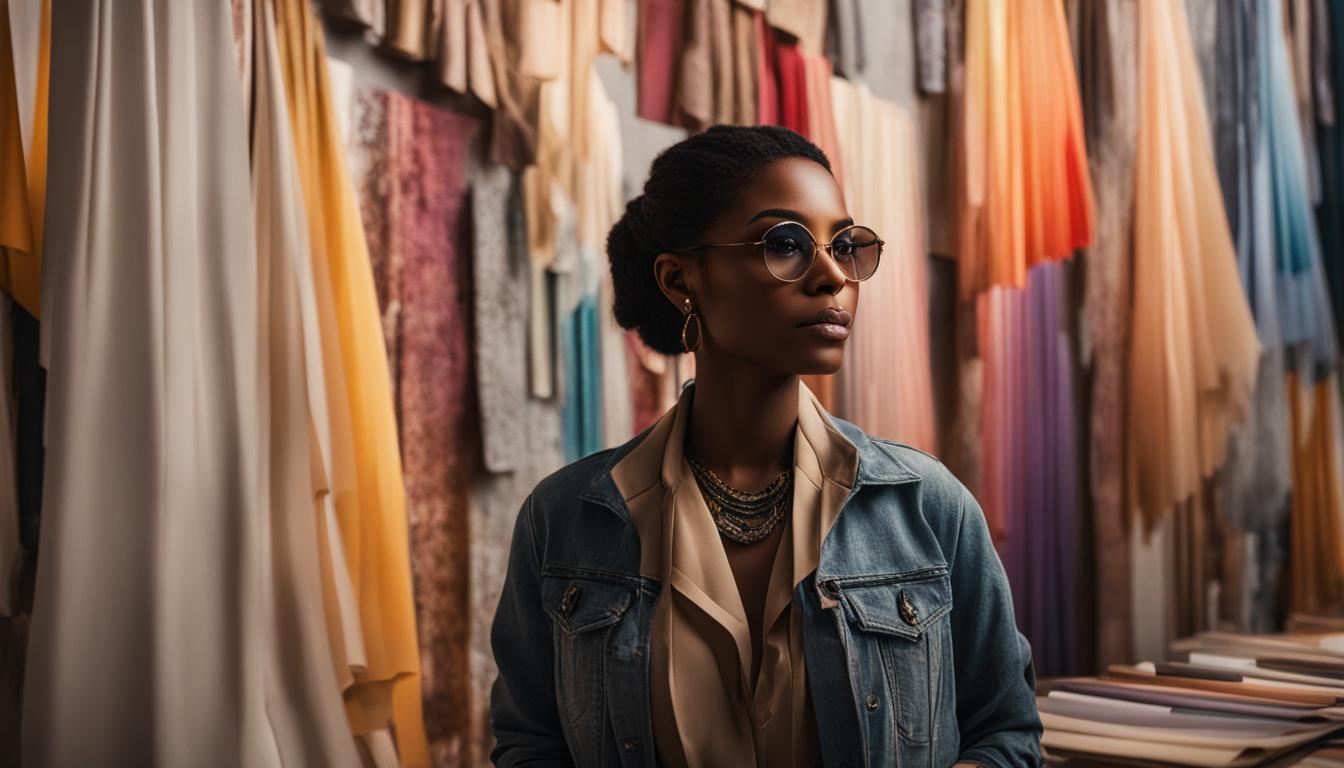
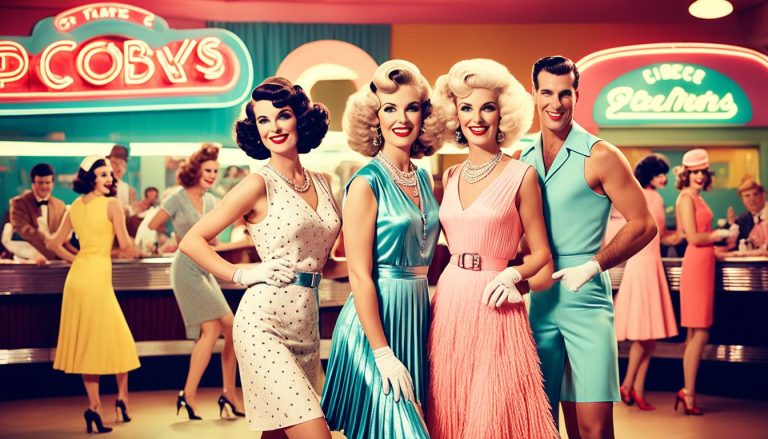



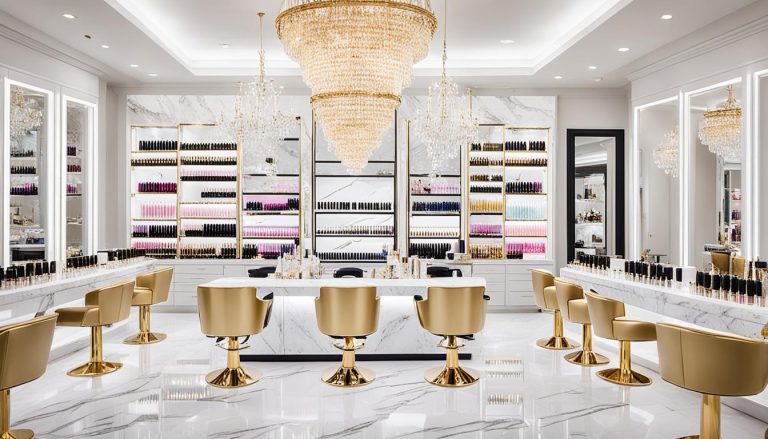
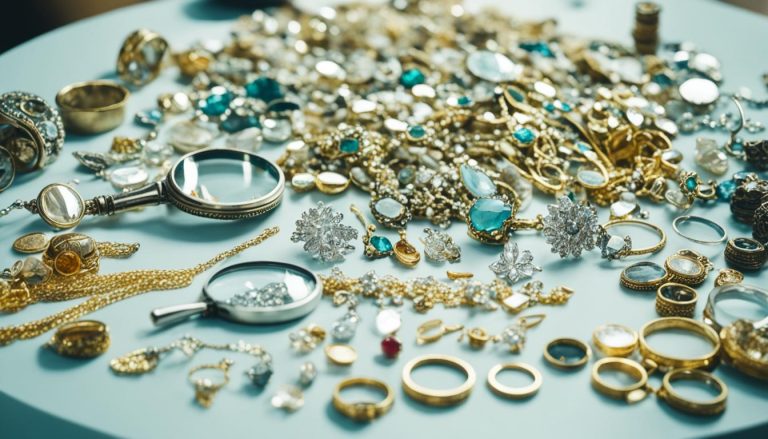
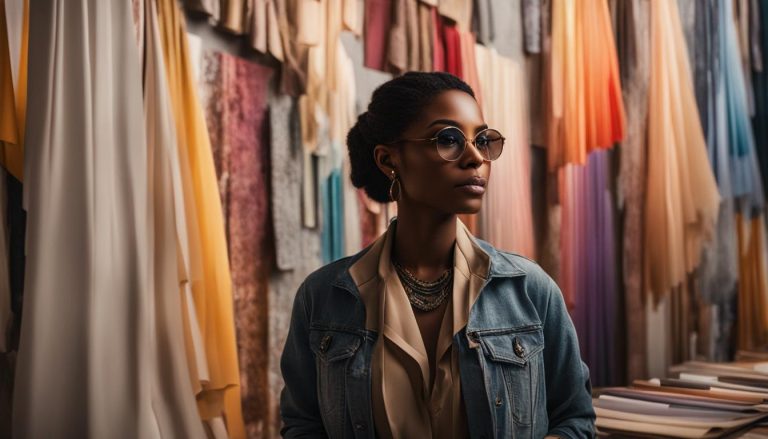


+ There are no comments
Add yours